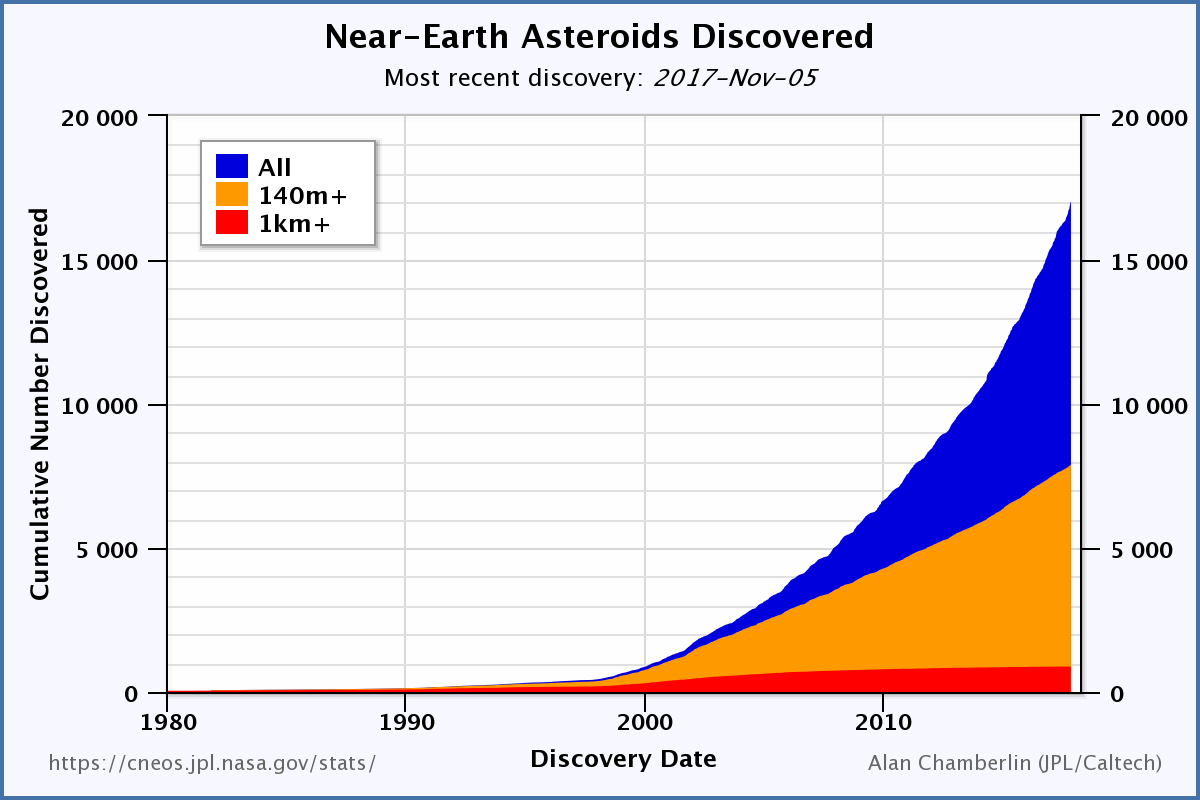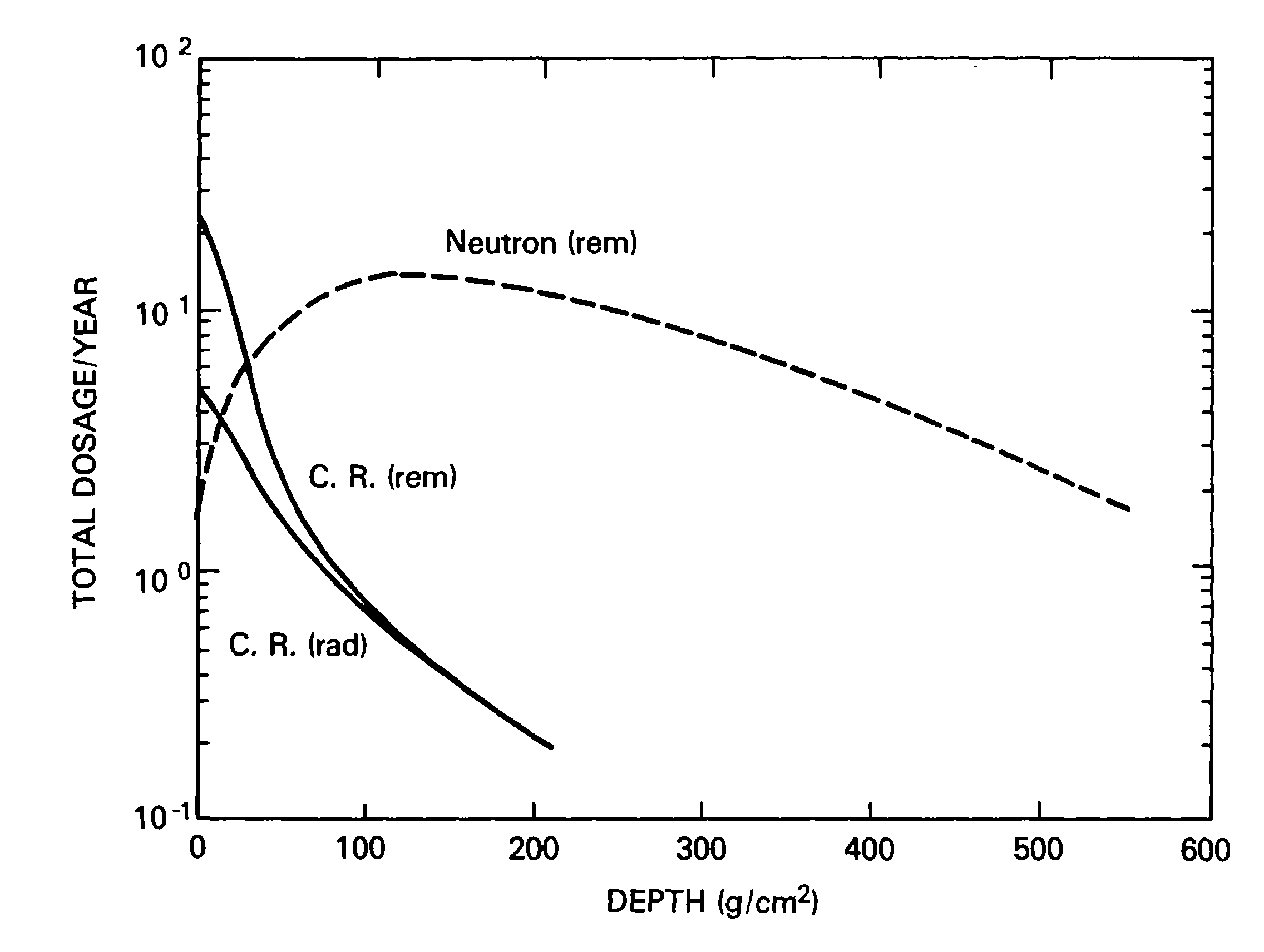|
⇤ ← Revision 1 as of 2017-11-10 06:19:38
Size: 3353
Comment:
|
Size: 3371
Comment:
|
| Deletions are marked like this. | Additions are marked like this. |
| Line 12: | Line 12: |
| {{attachment:nea_vs_time_chart.png}} downloaded from [[ http://cneos.jpl.nasa.gov/stats/totals.html | CNEOS ]] 2017/11/09 . | {{attachment:nea_vs_time_chart.png | | height=400px }} downloaded from [[ http://cneos.jpl.nasa.gov/stats/totals.html | CNEOS ]] 2017/11/09 . |
| Line 22: | Line 22: |
| {{attachment:NeutronRem.png | | height=300px}} from [[attachment:Silberberg1985.pdf | Silberberg1985.pdf ]]. | {{attachment:NeutronRem.png | | height=400px}} from [[attachment:Silberberg1985.pdf | Silberberg1985.pdf ]]. |
Asteroids or Mars?
Orycon 39, 2017
The European record with pathogens is not very good.
Mars was best for one thing - a second cradle of life. We get only one chance to do micropaleontology there before human-sourced biological contamination overwhelms whatever microbial fossils might remain from a past living era. We do not have the tools or the understanding to do that search now; hopefully, as we stake our claim to the solar system, we will develop the robots and the techniques to look there.
Jupiter's moon Europa is shrouded in ice, and may have a water ocean below, with sea-floor hydrothermal vents recapitulating the autocatalytic processes that led to life on Earth. Europa should also be left alone, for now. So what does that leave for humans?
The asteroids. Asteroids are smaller than planets, but much more numerous. The Center for Near Earth Object Studies at JPL coordinates the search for NEOs ( asteroids and comets ) that may someday impact Earth. Since some of these asteroids are currently far from Earth, with apoapses in the asteroids, the search is discovering many main belt asteroids as well. These are tiny moving dots of light in the sky, all we know about the small ones is their luminosity, and without knowing their albedo and shape, we can only estimate their size by comparing them to better observed objects. But adding up the estimated sizes and surface areas, we have already discovered more asteroid surface area than the surface area of our Moon. The rate of new discoveries is increasing, and the number of known objects has more than tripled in the last decade; in another decade, we may discover more surface area than Mars, or even the land area of the Earth itself.
 downloaded from CNEOS 2017/11/09 .
downloaded from CNEOS 2017/11/09 .
The asteroids may be the largest human settle-able surface in the solar system.
Settle-able? What about Mars?
Mars has enough gravity to kill us, but not enough to keep us alive. Martian gravity is 38% of Earth gravity, and will not hold onto a permanent atmosphere. Humans evolved for physical activity in 1 gee, standing and running and exercising (stand up and stretch right now!). Long periods in chairs or lying down cause cardiovascular damage, muscular and skeletal atrophy, changes in eyesight and cognition. Until we make major biomolecular changes to humans, sub-gee environments will slowly kill us. NASA doctors write books about this, and we pretend they aren't true - hence the current declining life expectancy in the US.
The Earth's atmosphere and strong magnetic field protects us from the lethal radiation of space; Mars has neither. Indeed, "just a little" radiation shielding turns high energy particles into sprays of neutrons, which require more than 4 meters of regolith to absorb.
 from Silberberg1985.pdf.
from Silberberg1985.pdf.
---
A great exploration dwarfing the Asian/Polynesian settlement of the Pacific. The US used to celebrate Columbus Day, when Christopher Columbus "discovered" the Americas for Spain. The America
